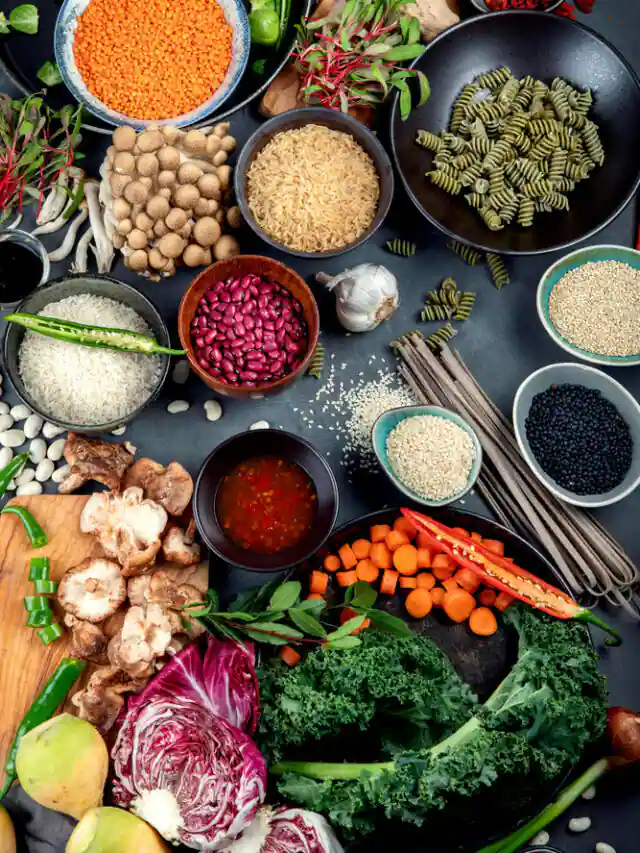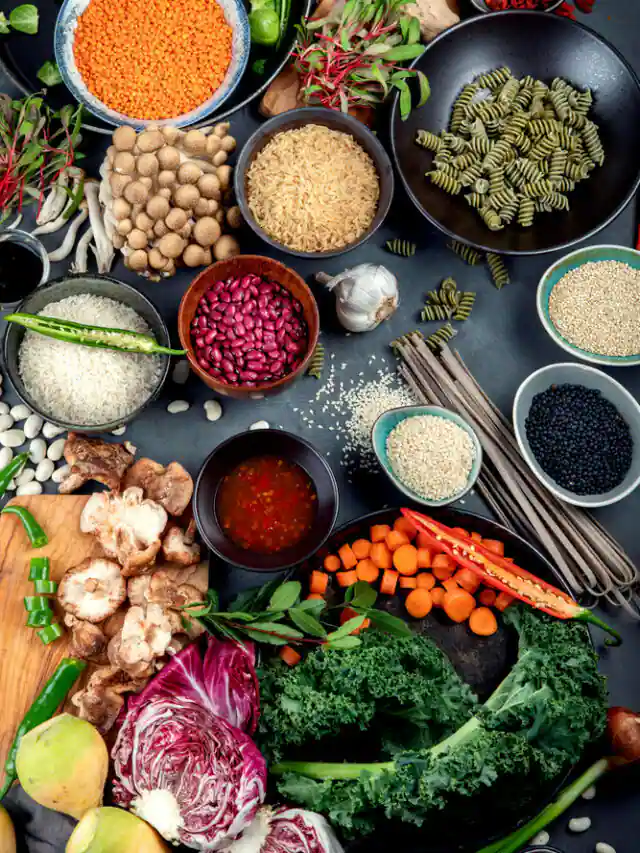A Mother’s Wisdom, A Chef’s Secret: Why Traditional Cooking Matters
As a mother, homemaker, and life coach, I believe our kitchen, our Mana Vantillu, is more than just a room-it’s the heart of our home and the powerhouse of our family’s health. In our fast-paced world, we often chase convenience, sacrificing the rich flavors and profound health benefits that come from time-honored, traditional cooking methods.
But what if I told you that the secret to a richer, more satisfying, and healthier life lies in the wisdom of our ancestors? The traditional techniques that have stood the test of millennia are making a powerful comeback. Why? Because they naturally enhance flavor, preserve nutrients, and, crucially, ground us in the mindful act of creation.
As an experienced Nutritionist and Chef, I’ve broken down the Top 20 Traditional Cooking Methods Still Used Today. This isn’t just a list; it’s a guide to transforming your kitchen into a haven of health and authentic taste.
Part I: The Direct Heat Masters (Open Fire & Clay)
These methods use direct heat to create unparalleled flavor-think smoky char and intense heat-locking power. They are a testament to the resourcefulness of our ancestors.
1. Tandoor/Clay Oven Cooking
- The Method: Originating in the Indian subcontinent, the Tandoor is a bell-shaped clay or metal oven that uses charcoal or wood to generate extremely high heat (up to $900^\circ\text{F}$). Food (like naans or kebabs) is either baked against the inner walls or skewered and lowered into the pit.
- The Chef’s Edge: The rapid, high-heat cooking seals the juices instantly, resulting in meats and vegetables that are incredibly moist and tender, with a characteristic smoky, charred exterior.
- The Nutritionist’s Take: It’s a zero-oil or minimal-oil method, making it lean and healthy. The quick cooking time helps retain water-soluble vitamins that might be lost in longer cooking processes.
- Optimal Utensil Quality: A genuine Clay Tandoor provides the most authentic flavour, but modern home cooks can achieve a similar effect using a high-quality cast iron Dutch oven preheated inside a hot oven to mimic the intense, radiant heat.
2. Live-Fire/Open Flame Grilling (The Ancestral Grill)
- The Method: Cooking food directly over wood, coals, or open flame. This is the oldest, most universal method, connecting us directly to our ancestral roots.
- The Life Coach’s Lesson: Engaging in live-fire cooking is a wonderful form of mindful cooking and a great social ritual-a true family gathering technique.
- The Foodie’s Delight: The chemical reaction between amino acids and reducing sugars at high heat, known as the Maillard Reaction, creates hundreds of new, complex flavor compounds-the essence of that irresistible smoky char.
- Optimal Utensil Quality: Use sturdy, uncoated cast iron grills or stainless steel skewers. As a materials expert, I caution against thin, non-stick surfaces, as they break down at high grilling temperatures and are not suitable for traditional methods.
3. Roasting (Dry-Heat Carameliation)
- The Method: Cooking food (typically larger pieces of meat or hard vegetables) uncovered in an oven or over hot coals, using dry heat and air.
- The Nutritionist’s Take: Like Tandoor, dry roasting (especially for whole vegetables and spices) is a zero-oil technique that caramelizes the food’s natural sugars, enhancing flavour without adding fat. The result? Easier-to-digest fiber and a higher retention of certain nutrients compared to boiling.
- The Homemaker’s Tip: When roasting spices like coriander (dhaniya) or cumin (jeera) for your masalas, dry-roast them on a low-to-medium flame in a heavy-bottomed iron skillet to prevent burning and maximize the release of their essential oils, which are easier for the body to absorb.
Part II: The Moist Heat Preservers (Water & Steam)
These methods are characterized by gentle, even cooking, which is ideal for breaking down tough proteins and maximizing nutrient retention.
4. Steaming (The Gentle Cook)
- The Method: Cooking food over, but not directly in, boiling water. Popular in Asian and Indian cuisines (like Idli and Modak).
- The Nutritionist’s Take: Steaming is arguably the best method for preserving vitamins and minerals, especially Vitamin C and B-complex vitamins, which are often leached out into water when boiling.
- The Chef’s Advice: Steaming keeps the natural vibrant colors and crisp texture of vegetables, requiring little-to-no added fat, keeping your dishes light and fresh.
- Optimal Utensil Quality: Bamboo steamers are traditional and impart a subtle, sweet aroma. For modern use, a stainless steel steamer basket is durable, non-reactive, and easy to clean.
5. Simmering & Stewing (The Slow Mélange)
- The Method: Cooking food slowly in a liquid (water, broth, or sauce) just below the boiling point. Simmering is gentle, while stewing involves smaller cuts of food and less liquid.
- The Life Coach’s Principle: Simmering is a lesson in patience and presence. It’s where humble ingredients become magnificent-perfect for breaking down tough cuts of meat or hardy root vegetables like potatoes and carrots.
- The Doctor’s Prescription (as Nutritionist): The long, slow process extracts collagen and amino acids from bones and connective tissues (if making broth or stock), creating a rich, nutrient-dense, and highly digestible final product that supports gut health and joint mobility.
- The Foodie’s Preference: This method allows flavours to truly meld and deepen. Think of a hearty Sambar, a slow-cooked Dum Pukht, or a comforting Khichdi-dishes where every ingredient contributes to the whole.
6. Boiling (The Quick Tenderizer)
- The Method: Cooking food submerged in vigorously bubbling water at $212^\circ\text{F}$ ($100^\circ\text{C}$).
- The Homemaker’s Application: It’s fast and efficient for staple starches like pasta, potatoes, or rice (though simmering is often better for a fluffy result). It’s also the first step for blanching.
- The Nutritionist’s Caution: Use this method judiciously. While effective, it leads to the highest loss of water-soluble nutrients. Always use the cooking water (the “pot liquor”) as a base for sauces or broths if possible to reclaim those nutrients.
Part III: The Preservation Powerhouses (Health & Gut Support)
These techniques are rooted in the necessity of food preservation before refrigeration, resulting in powerful flavor profiles and significant health benefits, especially for the gut.
7. Fermentation (The Probiotic Goldmine)
- The Method: The ancient practice of transforming food by controlled microbial growth (yeast and bacteria). Think yogurt, dosas and idli batter, pickles, and Panta Bhaat (fermented rice).
- The Doctor’s Rationale: Fermentation is a pre-digestion process. The microbes break down complex carbohydrates and anti-nutrients (like phytates), making the food much easier to digest and significantly boosting the bioavailability of nutrients (like B-vitamins).
- The Nutritionist’s Highlight: It introduces beneficial probiotics to the gut, which are crucial for immune function, mental health, and nutrient absorption.
- The Life Coach’s Perspective: Embrace the mess and the wait! Fermentation is a deeply rewarding, slow-food practice.
8. Drying & Dehydrating
- The Method: Removing moisture from food-either by sun-drying (the most traditional) or modern dehydration.
- The Foodie’s Secret: This method concentrates the natural sugars and flavours, creating intense sweetness (in fruits) or deep umami (in tomatoes and mushrooms).
- The Homemaker’s Efficiency: It drastically extends shelf-life, turning seasonal abundance into a year-round resource, embodying the principle of waste minimization.
9. Pickling & Brining
- The Method: Preserving food by submerging it in a solution of acid (like vinegar) or a high concentration of salt (brine).
- The Chef’s Technique: Salt curing (a form of brining) was essential for ancient preservation, and today, it adds a stunning depth of flavor to meats and vegetables, from Roman Garum to a classic Indian lemon pickle.
Part IV: The Kitchen Implement’s Role (Materials & Methods)
The material of your vessel is inseparable from the traditional cooking method. As an Expert in Material Quality of Utensils, I can tell you that the right pot is key to the right result and the right nutrition.
10. Clay Pot Cooking (Handi or Matka)
Shutterstock
Explore
- The Method: Cooking in unglazed or glazed porous earthenware.
- The Material Quality Deep Dive: Clay is naturally porous and allows moisture and heat to circulate through the food, leading to a moist, tender result. It cooks slowly and evenly, which means you need less oil. Crucially, clay is naturally alkaline, which interacts with the acidity of many foods to help balance the $\text{pH}$ and make the dish easier on the stomach.
- The Chef’s Tip: Clay imparts a subtle, earthy aroma that stainless steel can never replicate. Always buy certified, lead-free clay pots and season them properly before use.
11. Cast Iron Cooking (The Enduring Pan)
- The Method: Using heavy, uncoated iron cookware, revered for its phenomenal heat retention.
- The Material Quality Deep Dive: Cast iron is a poor conductor of heat but an exceptional retainer, meaning it’s slow to heat up and slow to cool down. This self-regulating heat is perfect for deep-frying (like Puri or Medu Vada) or getting a perfect, even sear.
- The Doctor’s Prescription (as Nutritionist): Cooking acidic foods in seasoned cast iron can leach small amounts of dietary iron into the food. For people with iron deficiency, this is a beneficial, albeit small, source of the mineral.
12. Stone Grinding (The Art of the Sil Batta)
- The Method: Using a mortar and pestle or grinding stones to crush spices and ingredients.
- The Foodie’s Secret: The controlled, gentle crushing of a stone mortar and pestle (Sil Batta or Kallu) preserves the volatile essential oils in spices like cardamom, peppercorns, and cinnamon far better than a high-speed electric grinder. The resulting masala is fresher and more potent.
Part V: The Flavor and Texture Techniques
These methods focus on the foundational stages of a dish, often adding complexity and richness.
13. Tempering (Tadka or Chhaunk)
- The Method: The quick-fry of whole spices (mustard seeds, cumin, curry leaves, asafoetida) in hot oil or ghee just before adding them to a dish (or at the end).
- The Chef’s Core Skill: This technique, central to Indian cuisine, is a precise science of flavor release. The hot fat extracts the full aromatic compounds from the whole spices instantly.
- The Nutritionist’s Note: Using healthy fats like Ghee or mustard oil in moderation ensures the fat-soluble vitamins (A, D, E, K) in the main ingredients are properly absorbed.
14. Ash Baking (Ember Roasting)
- The Method: Cooking food (like root vegetables, whole fish, or dough) directly in hot embers or ashes, wrapped in leaves or clay.
- The Foodie’s Experience: It results in an unparalleled smoky flavor and a tender, moist interior, as the embers provide gentle, all-around, radiant heat without the drying effect of a conventional oven.
15. Banana Leaf/Corn Husk Wrapping (Nature’s Steamer)
- The Method: Wrapping food tightly in natural materials before steaming or grilling.
- The Homemaker’s Resourcefulness: The leaves act as a natural, moisture-locking parchment paper. They trap the food’s own steam and juices, tenderizing and infusing the dish with subtle, appealing aromatics (like the sweet fragrance of a banana leaf).
Part VI: Blending Tradition with Modernity: Yoga & Lifestyle
Traditional cooking isn’t just how we cook; it’s how we live. As a Yoga Trainer and Lifestyle Blogger, I see a direct link between the food we prepare and our overall wellness.
16. Soaking and Sprouting (The Bio-Activation)
- The Method: Soaking legumes and grains (like dal or chickpeas) in water before cooking, and then letting them germinate (sprouting).
- The Yoga Trainer’s Philosophy: Soaking is the first, crucial step toward pre-digestion. It softens the grain, reduces cooking time, and, most importantly, reduces the level of anti-nutrients (like phytic acid), making minerals like iron, zinc, and calcium far more bioavailable.
- The Nutritionist’s Endorsement: Sprouting is a powerful, low-effort way to dramatically increase nutrient content, essentially creating living food rich in Vitamin C and enzymes.
17. Slow Cooking in Low Heat (The Gentle Warmth)
- The Method: Using extremely low heat over long periods to cook and tenderize, much like a modern slow cooker.
- The Life Coach’s Mantra: This technique teaches us to slow down in a world of instant gratification. The methodical nature of slow cooking-preparing the ingredients, leaving the pot to gently bubble-is incredibly therapeutic and reduces stress. It’s an act of self-care and nourishment.
- Money Management Person’s Tip: Slow cooking makes tough, inexpensive cuts of meat incredibly tender and flavorful, providing a high-quality, economical meal for the whole family.
18. Braising (The Combination Cook)
- The Method: A two-step process: first, searing food (usually meat or hearty vegetables) at high heat, and then simmering it slowly in a small amount of liquid in a covered vessel.
- The Chef’s Technique: The initial high-heat sear develops the Maillard Reaction (flavor), and the subsequent slow, moist cook tenderizes the tough fibers. It’s the perfect blend of texture and depth.
19. Stone Boiling
- The Method: Heating stones in a fire and then dropping the hot stones into a vessel containing liquid and food to bring it to a boil.
- The Ancestral Connection: This method, used when pottery or metal was scarce, highlights human ingenuity. It’s a powerful reminder that all you truly need to create nourishment is heat, water, and raw ingredients.
20. Pressure Cooking
- The Method: While the modern pressure cooker is a metallic invention, the principle of cooking under pressure to quickly tenderize tough foods and retain moisture is rooted in ancient methods like the Earth Oven or Bamboo Tube Cooking, where natural pressure built up.
- The Homemaker’s Efficiency: For many Indian dishes, the pressure cooker is a crucial, time-saving bridge between tradition and modernity. It cooks lentils (dal), rice, and hard-to-tenderize beans in a fraction of the time, preserving the nutrient-rich cooking liquid and reducing fuel (gas/electricity) consumption.
Your Kitchen, Your Legacy: Embracing the Traditional Path
Integrating these twenty methods into your routine doesn’t mean abandoning your modern kitchen; it means elevating it.
It’s about choosing a cast iron skillet over a non-stick pan for your roti or a traditional clay handi for your biryani. It’s about taking the time to ferment a batch of dosai batter for better gut health or using the gentle heat of steaming to preserve the bright crunch of your vegetables.
The traditional kitchen is a lab of health, flavor, and sustainability. As a content writer, I encourage you to document your journey and share the ancient wisdom you rediscover. Every traditional meal you prepare in your Mana Vantillu is a powerful act of nourishing your family’s body, mind, and spirit.
Start small: pick one technique this week-perhaps dry-roasting your spices or slow-simmering a restorative broth-and notice the difference in taste, in health, and in the sense of mindful presence it brings to your life.










